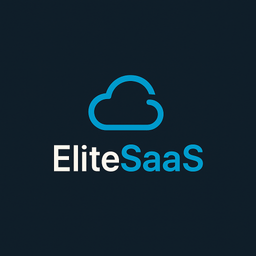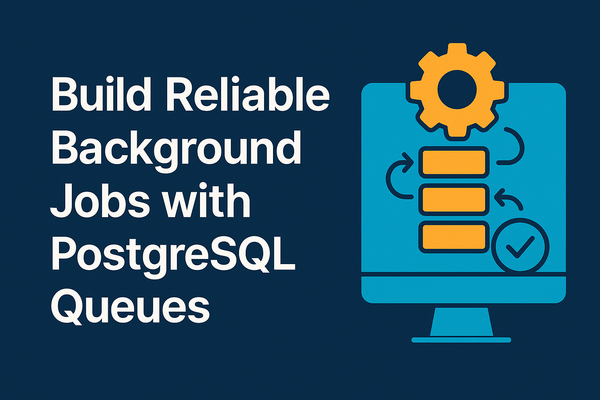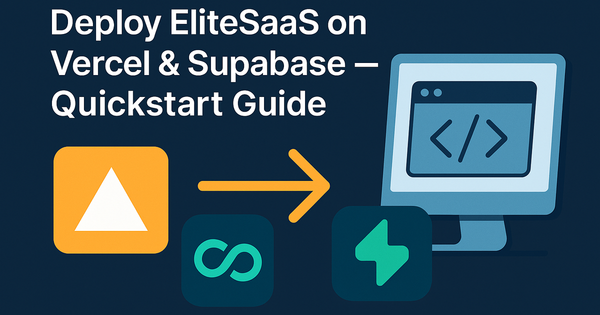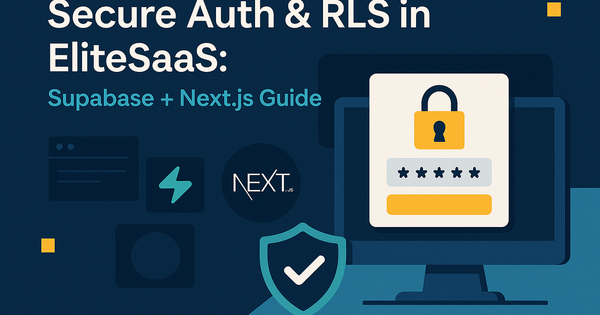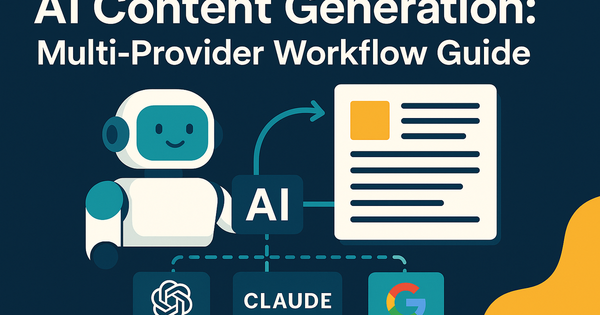EliteSaaS Launch: Ship a Production SaaS in Hours Now
Launch EliteSaaS: save 520+ hours and $70k+ year-one. Production-ready Next.js + Supabase SaaS template with AI content, billing, teams, CMS, and live chat.
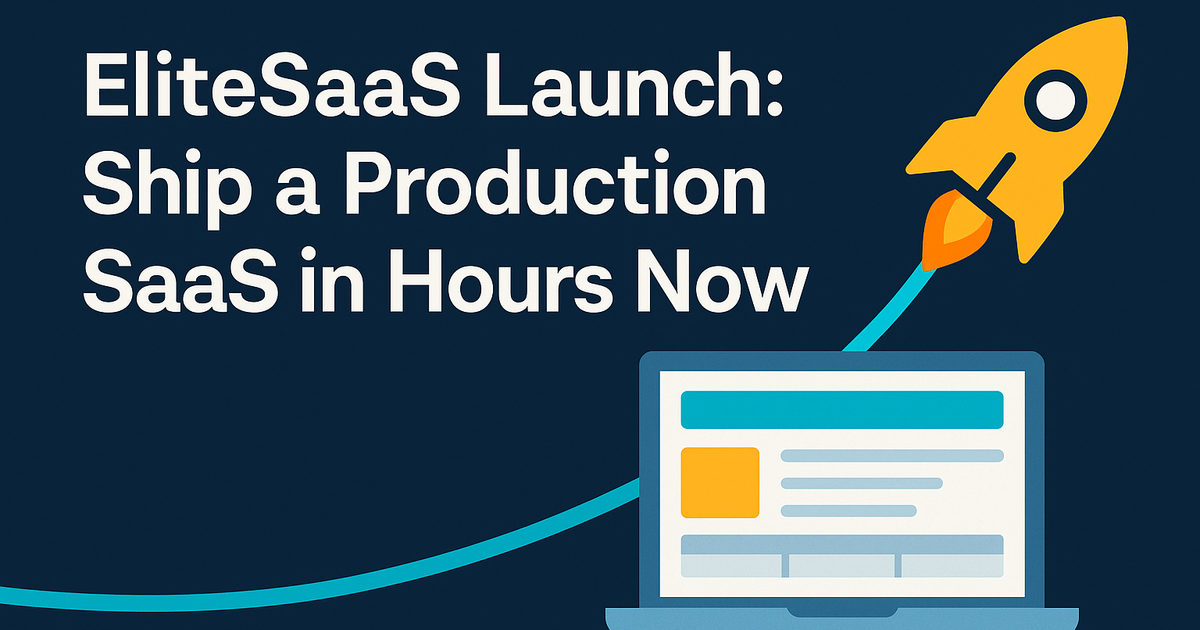
Introduction
Ship your SaaS in hours, not months. EliteSaaS is a production-ready, enterprise-grade SaaS template built on Next.js and Supabase that eliminates 520+ hours of foundational development and more than $70k in first-year costs. If you’re a solo developer, indie hacker, or small team who wants to focus on product differentiation instead of rebuilding auth, billing, email flows, and marketing infrastructure — this is for you.
This announcement explains what EliteSaaS includes, the short checklist to get started, a practical 48-hour launch walkthrough, and a go-to-market strategy that leverages the template’s built-in AI content generation and social workflows.
What EliteSaaS Provides: Core Systems at a Glance
EliteSaaS is not a minimal starter — it’s a complete business operating system for SaaS founders. Key production-ready systems include:
- Authentication & User Management — Secure email/password sign-up, verification, password recovery, session refresh, middleware-protected routes, and Row-Level Security (RLS) for multi-tenant safety.
- Subscription & Billing — Dual-mode payments (Stripe subscriptions and one-time product sales), trials, lifetime plans, Stripe Customer Portal integration, and webhook-driven sync for accurate billing state.
- Team Management & RBAC — Multi-team support, role-based access (Owner / Admin / Member), invitation flows, subscription inheritance, and audit logging.
- Email Automation — Resend-backed transactional + marketing email flows, React Email templates, drip sequences, enrollment triggers, and analytics.
- AI-Powered Content — Built-in generators using OpenAI, Anthropic Claude, and Google Gemini. Produce blog posts, Product Hunt launch kits, social posts, and SEO-savvy metadata in seconds.
- Blog & CMS — MDX editor, SEO fields, scheduled publishing, and one-click social post generation from published posts.
- Background Job System — PostgreSQL-backed job queue with scheduling, retries, progress tracking, and an admin dashboard — no Redis required.
- Live Chat & Support — Supabase Real-time chat widget with an agent dashboard, session tracking, and notifications.
- Analytics & Tracking — First-party page analytics, UTM attribution, engagement metrics, and admin analytics for product decisions.
Every system above is designed to be modular: enable what you need, ignore what you don’t, and extend what you want.
Quickstart Checklist — Get Ready to Launch
A short checklist you can follow to move from zero to a deployed demo quickly:
- Clone the repo and install dependencies
- git clone && pnpm install
- Copy environment file
- cp .env.example .env.local
- Configure Supabase
- Create project, set NEXT_PUBLIC_SUPABASE_URL and NEXT_PUBLIC_SUPABASE_ANON_KEY, and add SUPABASE_SERVICE_ROLE_KEY
- Configure Stripe
- Add STRIPE_SECRET_KEY and STRIPE_WEBHOOK_SECRET in your environment
- Optional: Configure AI providers
- Add OPENAI_API_KEY, ANTHROPIC_API_KEY or GOOGLE_GENERATIVE_AI_API_KEY for content features
- Run dev server
- pnpm dev (or pnpm --filter=@elite-saas/web dev)
- Deploy to Vercel for production
- Create Vercel project and copy environment variables
- Publish your first AI-generated blog post
- Use the AI Content tools in the admin to generate, edit, and publish
Suggested internal links to add when publishing this article: "Quickstart deploy guide" and "AI content generation deep dive" (link those anchor texts to your docs pages for stronger internal SEO).
Mini Walkthrough: Your First 48 Hours
Below is a practical timeline you can follow. This is what a solo founder or small team can realistically accomplish.
Hour 0–2: Code & Environment
- Clone the repository and install (pnpm install). Copy
.env.exampleto.env.local. - Create a Supabase project and apply migrations (or seed admin data if provided). Add Supabase URLs and keys to env.
- Provision a Stripe test account and populate secret keys.
Hour 2–8: Local Run & Basic Flows
- Start the dev server and confirm auth flows work (sign-up, verification, sign-in).
- Create a test user, verify protected routes, and inspect Row-Level Security behavior.
- In Stripe test mode, run a Checkout session for a Starter plan and confirm webhook events update the
subscriptionstable.
Day 1 Afternoon: Deploy & Smoke Tests
- Deploy to Vercel (production) with the same environment variables.
- Test the Stripe webhook endpoint in production (use Stripe CLI or test webhooks).
- Open the admin dashboard and verify your admin account, blog editor, and job dashboard are accessible.
Day 2: Content & Launch Kit
- Use the AI Content Generator to create a blog post about your product and a Product Hunt launch kit. Edit in the MDX editor, add featured image metadata, and schedule or publish immediately.
- Auto-generate LinkedIn, Twitter/X, and Reddit variations from the same blog post.
- Publish the blog post and queue social posts via the background job system.
What you’ll have by the end of 48 hours: a deployed product with auth, billing, a published blog post, and scheduled social posts — ready to demo to early users or to submit to Product Hunt.
Screenshots to include in your launch materials (add these from your demo site):
- Admin dashboard (caption: "Admin console: user, job, and settings overview")
- Blog editor (caption: "MDXEditor with AI draft and SEO fields")
- Product Hunt Launch Kit generator (caption: "One-click launch kit for Product Hunt")
(Place those images from your deployed demo or docs — use descriptive filenames like admin-dashboard.png, blog-editor.png, and launch-kit.png.)
Marketing & Launch: AI Content + Social Strategy
EliteSaaS removes the content bottleneck by integrating AI-first content workflows directly into the product. Use these built-in features to create launch copy and multi-platform assets fast:
- Generate a long-form blog post, then create a LinkedIn longform snippet and a Twitter/X thread from the same source.
- Produce a Product Hunt launch kit with headlines, descriptions, and assets prefilled.
- Schedule email sequences to onboard your first signups and invite waitlisted users.
SEO & social strategy notes (copy-ready):
- Meta title suggestion (primary): "EliteSaaS — Ship a Production SaaS in Hours"
- Meta description suggestion (primary): "Launch EliteSaaS: save 520+ hours and $70k+ year-one. Production-ready Next.js + Supabase SaaS template with AI content, billing, teams, CMS, and live chat."
Suggested LinkedIn longform snippet (use as-is or adapt):
After rebuilding core infrastructure for the fourth time, I built EliteSaaS — a production-ready SaaS foundation on Next.js + Supabase that saves 520+ hours and $70k+ in first-year costs. It includes auth, billing, teams, email automation, background jobs, blog/CMS, live chat, analytics, and built-in AI content generation. If you're a solo founder or small team, stop rebuilding boilerplate. Ship your product and focus on what makes your product unique.
Six-tweet X (Twitter) thread outline for launch day:
- Tweet 1 (Hook): "Ship a production SaaS in hours, not months. Meet EliteSaaS — a Next.js + Supabase starter that saves 520+ hours."
- Tweet 2 (Problem): "You spend months on auth, billing, teams, email, and jobs. That’s 520+ hours that aren't your product."
- Tweet 3 (Solution): "EliteSaaS gives you auth, Stripe billing, teams with RBAC, email automation, blog CMS, live chat, background jobs — production-ready."
- Tweet 4 (AI): "Built-in AI content generation (OpenAI, Claude, Gemini) creates blog posts, LinkedIn copy, and Product Hunt launch kits in minutes."
- Tweet 5 (48-hour walkthrough): "Clone, configure Supabase, set Stripe keys, deploy to Vercel, publish an AI-generated blog post — done in 48 hours."
- Tweet 6 (CTA): "See a live demo, read the docs, or buy EliteSaaS and start shipping this weekend. #SaaS #NextJS #Supabase"
Use those snippets as prefilled social posts inside the admin to accelerate launch outreach.
Production Readiness & Scaling
EliteSaaS is built with production patterns in mind:
- Security: RLS on all tables, secure session handling, CSRF protections, and webhook signature verification.
- Observability: Built-in analytics, job monitoring, and logs for background tasks.
- Scaling: Deploy to Vercel with Supabase for the database. Background jobs are PostgreSQL-backed (no extra Redis cost) and the architecture supports read replicas, caching, and edge functions when you scale.
- Extensibility: Clean service-layer patterns and TypeScript strict mode make it straightforward to add domain-specific features or swap components.
Operational checklist before inviting customers:
- Verify Stripe webhooks in production
- Configure email domain & DKIM for Resend
- Set up Sentry or error monitoring (recommended)
- Audit RLS policies and test cross-tenant isolation
- Review performance on staging and set up database backups
Conclusion — Your Fastest Path from Idea to Revenue
EliteSaaS turns 520+ hours of repetitive infrastructure work into a few setup steps. With a production-ready Next.js + Supabase stack, built-in AI content generation, and an integrated business OS (auth, billing, teams, email, jobs, blog, chat, analytics), you can ship a credible MVP or client-ready product in days.
